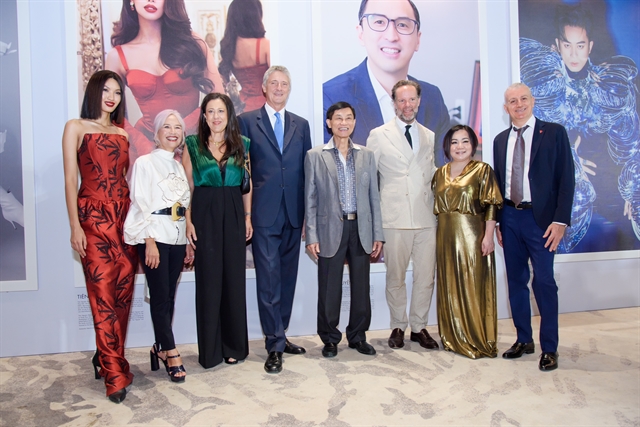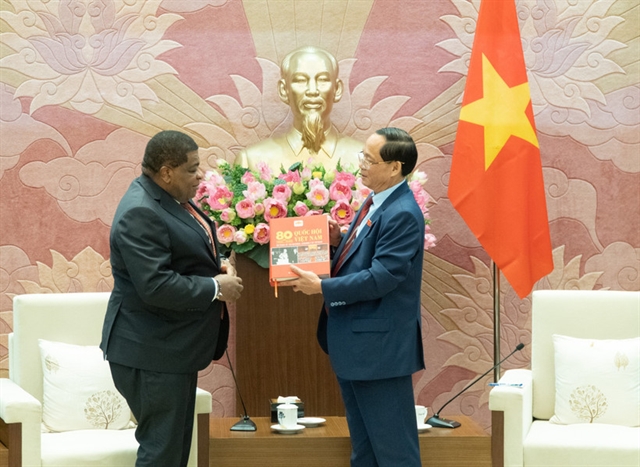 Inner Sanctum
Inner Sanctum

 |
| FASHION MAVEN: Trần Nguyễn Thiên Hương, editor-in-chief of Harper’s Bazaar Vietnam and head of the organising board of the “Vietnam’s Fashion Journey 2000-2023” exhibition. Photo courtesy of Harper’s Bazaar Vietnam |
Inner Sanctum: Where do you get inspiration for the exhibition from?
As fashion editors, our continuous research extends to both international and local fashion history. Yet, we've encountered numerous challenges when seeking information about Việt Nam's fashion history. The scarcity of documentation detailing the inception and progression of this pivotal industry in our country has been noticeable. Consequently, the “Vietnam's Fashion Journey 2000-2023” exhibition represents our endeavour to meticulously document the evolution of the local fashion industry during the initial quarter of the 21st century. We firmly believe that this undertaking is crucial for providing future generations with insight into this significant period in our local fashion landscape.
Inner Sanctum: What were the challenges in preparing and organising the exhibition?
Curating an exhibition is never an easy task. It involves not only extensive research and knowledge but also the unique challenge of showcasing items pivotal to the development of our local fashion industry, many of which have unfortunately been lost in the annals of our modern history. We dedicated a significant amount of time to meticulously tracing a historical thread, uncovering remarkable pieces and their associated stories.
Securing funding proved to be another hurdle. Unlike in other parts of the world where such events are typically funded by the government or NGOs, here in Việt Nam, we had to rely on our own budget, which is already stretched thin due to the ongoing economic difficulties.
Despite these challenges, we are filled with happiness and pride. We view curating this exhibition not just as a duty but as a responsibility to contribute to the growth of our local fashion industry.
Inner Sanctum: Vietnamese fashion designs are becoming popular among international figures. Would you have any suggestions for Vietnamese designers to approach the world market?
The fashion industry is inherently competitive, presenting a significant challenge for Vietnamese designers in our relatively young fashion scene. Despite these obstacles, Việt Nam is renowned for its garment manufacturing industry, where diligent and skilled Vietnamese workers shine, especially in craftsmanship. Modern Vietnamese designers have skillfully employed these talents to make beautiful creations that have captured the attention of world-renowned celebrities, thereby elevating Vietnamese fashion industry onto the global stage. The evidence of this craftsmanship is evident in the pieces showcased here today.
However, the prevailing trend among our designers is a primary focus on creating exquisite couture for a broad audience, with only a few dedicating attention to establishing a distinctive brand DNA and defining their client profile. Additionally, while some designers delve into researching the country's heritage and incorporating these elements into their designs, there exists a general confusion between modernising the heritage and reproducing similar pieces worn by generations of our local clientele. In today's era, successful designers are those who can seamlessly achieve a global aesthetic while retaining a touch of local identity.
Inner Sanctum: How has social media affected the fashion industry?
The emergence of social media, particularly Instagram and TikTok, has brought fashion information to the public in a more powerful way than ever before. Details about fashion shows and new trends immediately spread, sometimes within minutes after major fashion weeks take place internationally. This is also the first time that designers have captured trends and market demands on a broad scale, thanks to the information and images circulating on social media accounts. Social media has also given rise to a generation of fashion influencers whose influence rivals that of celebrities in the entertainment industry. All these factors are crucial components in the development of the fashion industry today.
 |
| FASHIONISTAS: Hương (2nd left) with Italian Consul General Enrico Padula and his wife; Jonathan Hạnh Nguyễn, chairman of Imex Pan Pacific Group; Trang Lê, president of Việt Nam International Fashion Week; Dutch Consul General Daniel Stork; and Michele D'Ercole, chairman of Italian Chamber of Commerce in Việt Nam. Photo courtesy of Harper’s Bazaar Vietnam |
Inner sanctum: Would you share your thoughts on the future of Việt Nam’s fashion industry?
Nobody can predict the future, and I'm certainly no fortune teller (laughs). However, drawing insights from the evolution of the fashion industry since the beginning of the 21st century, I believe that Việt Nam's fashion is poised for significant advancements. Clothing is one of humanity's three fundamental needs, alongside food and shelter, making the fashion industry exceptionally crucial.
As our people gain more insights from the global stage, coupled with advancements in technology, and the fusion of our traditional skills, creativity, and work ethic, fabric production is poised to be the next phase of development. In alignment with the sustainable trend prevailing in the international fashion scene, our traditional silk fabric is set to reclaim its former glory. And, with the support of the government, I hope that helps silkworm farming and silk weaving to gain popularity, allowing us to expand the production of this futuristic and trendy fabric. — VNS




